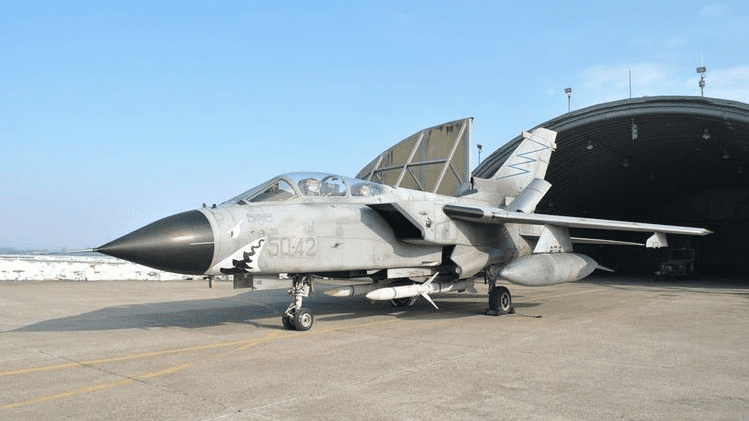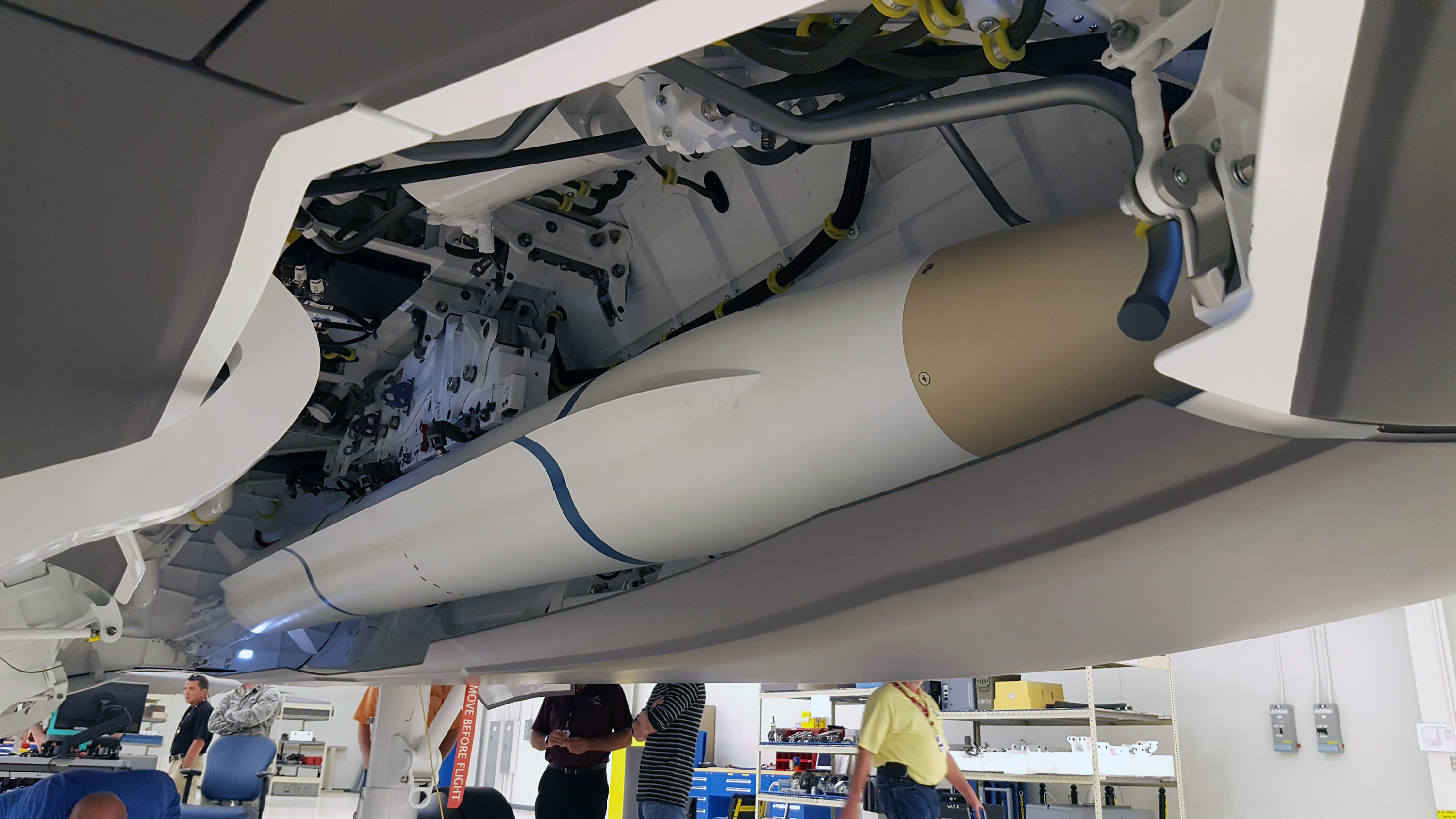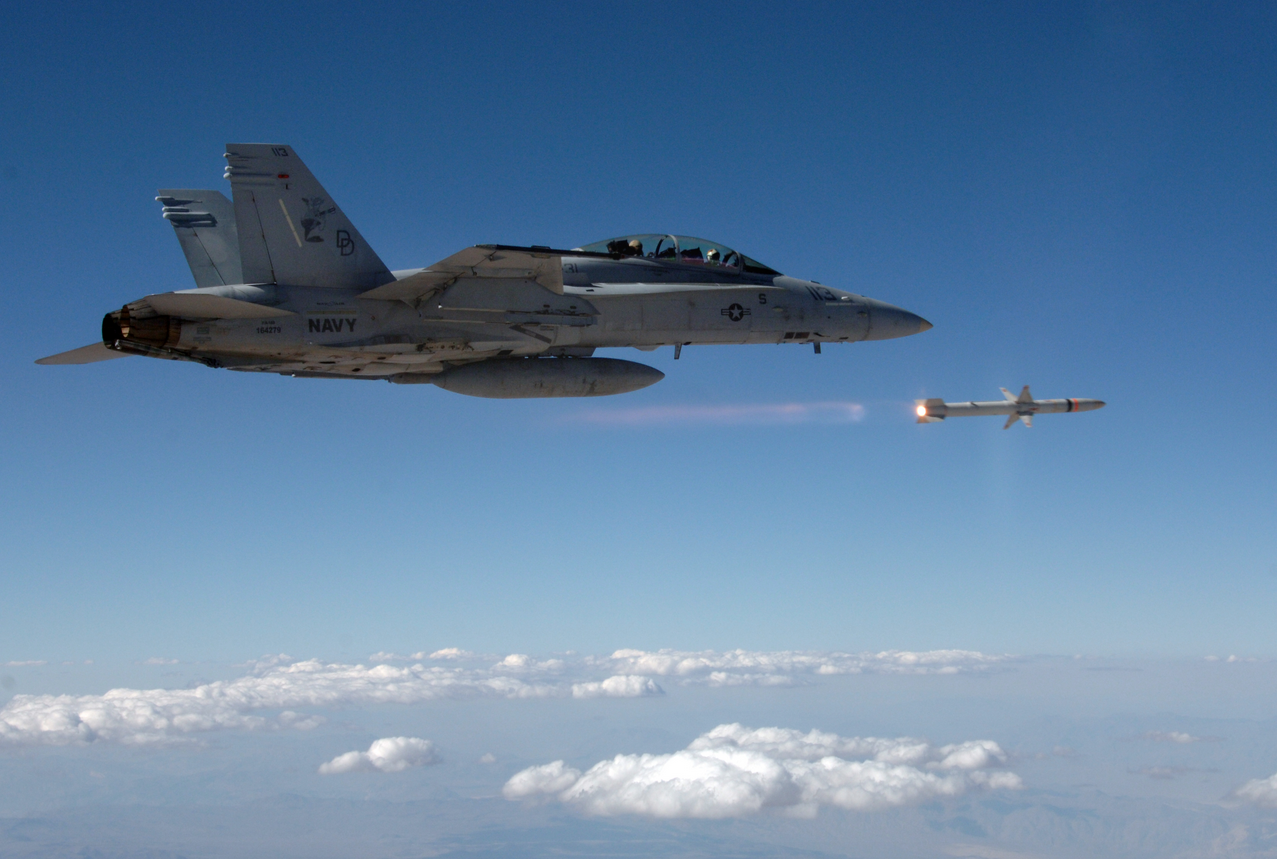Armed Forces
AARGM-ER – A Joint, Anti-Radiation Defence

US Armed Forces plan to extend scope of use of the new generation of anti-radiation missiles AARGM-ER to be used – amongst others – on the new generation fighters of F-35 category. According to DoD Budget Request for 2020, these missiles are to become foundation for the new system called Stand In Attack Weapon, designated for USAF. Defence24 has unofficially learned that integration of AARGM-ER with IBCS Air Defence C2 system has been under consideration as well as development of the surface launched version.
AARGM-ER is the program which regards the new generation anti-radiation missile, being under US Navy development since 2016. The missile is a modernization of AGM-88E AARGM system, currently used by US Navy, USMC and Italian Air Force, also being introduced in Germany and Australia. Let us remind that AARGM-ER, according to Pentagon’s budget forecast for fiscal year 2020, includes “hardware and software modifications to improve the Advanced Anti-Radiation Guided Missile (AARGM)'s operational capabilities, including extended range, survivability and effectiveness against complex, new, and emerging threats”.
Earlier information, published by Department of Defense and system’s manufacturer – Northrop Grumman Innovation Systems company, indicates that this modernization is supposed to base on implementation of the new propulsion system and changed design of the missile. These will allow to double its range and significantly increase the speed. What is more, carrying the missile inside inner weapon bays of 5th generation fighters will become possible.
At the same time, AARGM-ER will still use such existing elements of AGM-88E missile as the new guidance system (with digital passive radar’s detector, active millimeter wave radar and INS / GPS) as well as the warhead coming even from HARM missiles. Currently the system undergoes Engineering and Manufacturing Development. Contract for this development phase was signed at the beginning of March 2019, regards amount of USD 322 million and is to be concluded by the end of 2023.
US Armed Forces plan the extension of AARGM-ER use. From the beginning it was presumed that missile will be integrated with such US Navy platforms as F-35C and F/A-18E/F Super Hornet as well as E/A-18G Growler. However, the Department of Defense Budget Request for fiscal year 2020 includes also information on plans to use AARGM – ER also by US Air Force (USAF).
It concerns the Stand-In-Attack Weapon (SIAW). As we read in the budget request, “Stand In Attack Weapon (SIAW) system will provide strike capability to defeat rapidly relocatable targets that create the Anti-Access/Area Denial (A2/AD) environment”. Launching platforms of tactical ballistic missiles, maneuvering and anti-ship missiles, GPS jamming anti satellite systems and integrated air defence systems have been mentioned as possible targets. Key features of SIAW are to be – according to the Pentagon’s budget request – lethality, responsiveness, survivability, range and capability of carrying them the inside inner weapon bays.

F-35 is the first platform for SIAW integration. “The path to the SiAW capability is through the Navy Advanced Anti-Radiation Guided Missile-Extended Range (AARGM-ER) program with additions to the Universal Armament Interface (UAI), Warhead/Fuze, and Integration on the F-35.” – one can read in the budget’s draft.
SIAW is relatively new program, it started in fiscal year 2018. Two years later we already have fixed decisions about placing it on the same platform as AARGM – ER. The above clearly indicates that US Armed Forces put more and more emphasis on development of A2/AD break through capabilities. Combination of 5th generation fighter aircraft with supersonic missile, equipped with multi sensor guidance system and new combat section should allow to achieve capability to engage such critical targets as jamming systems, air defence systems or launchers. Survivability is to regard not only the platform, but also weapon system, what has been considered in the budget’s draft.
It drives to the conclusion that SIAW is one of the key systems which US Armed Forces will use in the future to break through anti – access “bobbles” (A2/AD). Such areas have been created not only in Asia and Pacific region, but also on Crimea Peninsula, annexed by Russia and Kaliningrad District, where – amongst other systems – launchers of tactical ballistic missiles, electronic warfare systems or - last but not least - anti – ship missiles’ launchers, capable to engage also onshore targets, have been permanently deployed.
SIAW is being jointly developed by US Air Force and Navy. Utilizing of ongoing program (AARGM-ER) allowed to accelerate its flow. As we read in budget request, the program has already been awarded with “Milestone B” and its Engineering and Manufacturing phase undergoing. Its schedule is same as for AARGM-ER (beginning: second quarter of 2019 fiscal year, meaning first quarter of 2019 calendar year, conclusion: forth quarter of 2023 fiscal year).
However, at the same time works, regarding Technology Maturation and Risk Reduction (TMRR) phase are ongoing. It may possibly regard some unique SIAW elements as for example warhead or propulsion. USAF efforts, aimed at implementation of SIAW, have been coordinated with US Navy. Thanks to that, both branches of US Armed Forces will receive if not identical, then similar weapon system for engaging A2/AD systems.

As far as US Navy is concerned, DoD Budget Request for 2020 includes detailed information, regarding implementation plan of AARGM-ER. It is underlined that AARGM – ER constitutes a part of Navy Integrated Fire Control (IFC), allowing to engage advanced threats inside A2/AD zones and coastal waters. IFC elements allow, amongst others, engage targets beyond radar horizon of the launching platform.
US Navy has adopted AARGM – ER urgent implementation plan. “AARGM-ER is a capability-based acquisition program and has been structured to meet the CNO's [abbrev. Chief of Naval Operations – ed.] urgency mandate to deliver warfighting capability as soon as possible”. – Pentagon’s budget request for fiscal year 2020
Low Rate Initial Production (LRIP) of AARGM – ER is to begin in fiscal year 2021, and system to achieve its Initial Operational Capability (IOC) in quarter four of fiscal year 2023, together with conclusion of Engineering and Manufacturing phase.
According to FY 2020 Budget Request, LRIP for AARGM-ER will include three batches of 16 missiles each, 48 in total. In turn, Full Rate Production (FRP) is to commence in third quarter of 2024. Way of implementation of AARGM-ER and SIAW programs clearly indicate that US Armed Forces intend to build quickly joint defence capability, basing on this particular platform.
Furthermore, Pentagon’s release from March this year mentioned about AARGM-ER integration on F/A-18E/F, E/A-18G and F-35A/C fighters. Presumably USAF F-35A fighters will be capable to use both AARGM-ER and SIAW systems, even when USAF decides to procure only the latter system.
AARGM-ER implementation schedule has also, to the certain extent, importance to other states possibly interested to acquire this weapon system through Foreign Military Sales (FMS) procedures. Routinely FMS articles become available after entering FRP phase. This requirement can be lifted through special “yockey waiver” procedure. This is how Poland is currently acquiring IBCS / Patriot system, in terms of Wisła program.
Warsaw has also been interested in acquiring AARGM-ER. In September 2018, the Polish MoD informed, responding to Defence24 request of information, that Minister of National Defense has approved Armament Inspectorate’s recommendation to acquire AARGM and letter of request for price & availability, which regarded AARGM and AARGM-ER, has been submitted to US Government. Ministry informed that budget for this program has been included into 2017-2026 financial perspective.
Currently, standard AGM-88E AARGM missiles are in service on US Navy, US Marine Corps and Italian Air Force. They have been procured, through FMS by Australia. Germany initially planned AARGM procurement as well. So, among F-35 users, Italy and Australia have already been in possession of AARGM. It drives to the conclusion that other countries might become interested in acquisition of SIAW or AARGM-ER, also because of possibility to carry them inside F-35 inner weapon bays.
Concept of anti-radiation defence capability, basing on AARGM system has been continuously developing and may possibly include also land forces. In October 2018 Northrop Grumman displayed – during AUSA exhibition – mockup of AGM-88E AARGM surface launching container. Such solution will allow to fire anti – radiation missiles also from the ground platforms and / or sea vessels. Defence24 got to know about studies on the concept of integration of AARGM / AARGM-ER missiles with IBCS, the integrated air defence command and control management system implemented by US Army. This would be the way when anti – radiation missiles could be used to defeat targets detected or “seen” by air defence sensors (eg. Missile launchers). Nota bene, according to the new US Army air and anti - missile defence strategy, air defence systems are to become the information source for ground troops.
